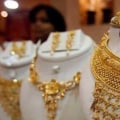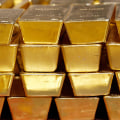As long as you don't buy it for personal consumption, you can invest between 5 and 10% of your total portfolio in precious metals, largely as a downside hedge against the riskiest assets in your profile. The part of your portfolio that you dedicate to precious metals will depend on your sensitivity to risk. In general, we advise our clients that between 5% and 15% of their portfolio be dedicated to precious metals, such as a Gold IRA home storage option. Thinking in terms of percentage rather than value is not necessarily a good choice. In fact, in the worst-case scenario of a financial crisis, you'll need absolute numbers, not percentages.
Therefore, the numbers indicated above would not necessarily be appropriate. In fact, the lower your overall net worth, the less significant the percentages will be. Precious metals have been prized for their beauty and scarcity for millennia. The oldest surviving examples of decorative gold artifacts date back about 6,000 years.
It is a legacy that continues today, since investing in precious metals is a key strategy used to safeguard wealth. With ETFs, you buy stocks of the precious metal of your choice. That action is linked to the current value of the gold, platinum or silver in which you invested. Gold adds a special element to a wallet, one that makes it different from all other metals.
However, Cramer warned that this metal should not represent even 20 percent of an investor's portfolio. In times of uncertainty, people turn to gold with the false assumption that it will be a safe investment. If you have an investment plan for a specific duration (for example, 2 years) because you plan to resell 5 years after your last purchase, the second method will give you a specific idea of the strategy you should adopt. Too large an asset allocation (15% or more) dedicated to precious metals could cause the highest return offered by other asset classes to be lost.
Another interesting approach to deciding how much gold you should allocate to your investment portfolio is to measure the percentage of global financial assets that gold ingots represent. It's an unlikely scenario in which all investments thrive at any given time; successful investors identify the right markets at the right time, and physical gold is a big exception to that rule, since it's such a long-term investment that it's never a bad time to own it. Investing in precious metals ETFs can provide much-needed cash flows during times of market downturn and business cycle slowdown. In addition, gold and silver are long-term strategic holds that can preserve your assets in case your company has to close its doors.
The dollar has not been able to be converted to gold since President Richard Nixon ended that practice in 1971. Before that, people bought gold bars as a way to diversify their investment portfolio and give them protection against inflation. To help you navigate these unknown waters, let's look at the main types of investment metals, the ways you can add them to your portfolio, and how to maximize the return on your shares. Just like when you have a dollar bill in your hand, you are sure to be able to hold your investment in the form of gold bars or silver coins in your hand (or keep it in your safe deposit box). So, when you decide to invest in gold thinking that you're going to be “one of the smartest” if the dollar collapses, you may have thrown your money down the toilet.
And while precious metals are subject to the same volatility as other investment options, the savvy investor can take advantage of those elastic values to generate profits. When consumer and investor confidence declines, I predict that the value of stocks and bonds will be the first to plummet. However, you could deviate from that allocation if you think you have good reason to believe that investors around the world, taken together, are wrong about the value of gold in relation to the stock and bond markets. .



